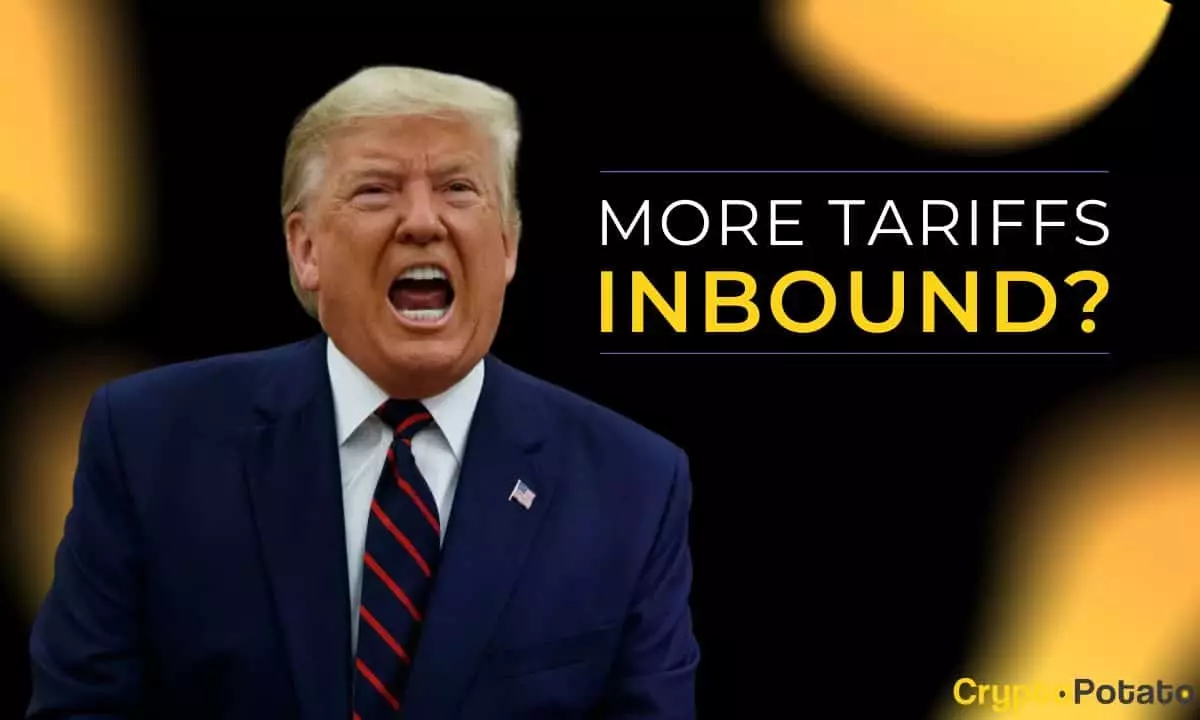The announcement of retaliatory tariffs by President Donald Trump has sent shockwaves through both domestic and international markets. Market analysts everywhere are keenly observing the escalation of what many now call the “Trade War.” With tariffs imposed on virtually all nations at a rate of 10%, including even steeper rates on key trading partners like China and Japan, the implications are serious. The notion of protecting American jobs has turned into an economic gamble that threatens to destabilize long-term relationships with global partners.
More than just a financial decision, these tariffs represent a significant shift in how the United States approaches international trade. The rationale behind this policy—narrowing the trade deficit—reflects a viewpoint that prioritizes short-term national gain over the complexities of global economic ties. While the idea of reciprocal measures may sound appealing in theory, the reality is often more complex, raising questions on whether this strategy is not just misguided but also dangerously simplistic.
Retaliation and Escalation: A Dangerous Game
The initial reaction from other countries, most notably China, was swift and severe. An increase in import taxes of 34% highlights the kind of reciprocal retaliations that create a tit-for-tat cycle. This backlash questions the fundamental integrity of America’s standing as a global trade leader. The claim of “bullying” from international players rightly captures the sentiment that economic conflicts over tariffs may lead to a larger confrontation—a situation where diplomacy is overshadowed by protectionism.
Moreover, the EU’s response further complicates matters. While their leaders have emphasized a willingness to negotiate, statements from officials reflect a readiness to protect their own economic interests. Therefore, any illusion of cooperative engagement may be short-lived, leading to fractured diplomacy and increased tensions between allies.
The Reaction from the Markets
Market senses are never wrong in their instinct to react, and the plunge in stock prices demonstrates widespread unease. Over $5 trillion in market capitalization lost is no small matter; this amount eclipses the downturns witnessed during major historical crises. The Dow Jones Industrial Average and Nasdaq, key indicators of the market’s health, have both entered bear territory, indicating a significant loss of investor confidence.
This decline sends shockwaves not only through U.S. markets but also through global stock exchanges interconnected by trade relationships. For industry stakeholders, the consequences are dire; heightened tariffs could lead to increased production costs, which would ultimately trickle down to consumers in the form of higher prices. When families face increased costs for everyday goods, economic sentiment can turn sour quickly, hurting Trump’s supportive voter base.
The Curious Case of Cryptocurrency
Interestingly, amidst the chaos of the stock market, Bitcoin appears to be charting its own course. Remaining surprisingly steady during these turbulent times, Bitcoin’s mild decrease of 0.3% raises intriguing questions about its role as an alternative asset. Conventional wisdom dictates that financial instability drives people toward non-traditional assets, and Bitcoin may be demonstrating its potential as a “digital safe haven.”
Experts are cautiously optimistic about this divergence, remarking that Bitcoin’s stability may signal a broader shift in how investors perceive risk. The traditional coupling of Bitcoin and stock prices appears to be loosening, hinting at the ever-growing allure of decentralized finance. Could this mark a turning point where cryptocurrency starts carving out its distinct niche amid conventional market turmoil?
The Bigger Picture: Long-term Economic Ramifications
All of these developments intertwine to form a complex narrative that questions whether aggressive tariff strategies can truly yield positive results for the U.S. economy. While aiming to protect American workers, such policies often lead to unintended consequences that could ultimately harm the very people they claim to support. Increased production costs, strained international relationships, and existing market volatility all scream for a more balanced approach.
Conservatives, often focused on economic freedom, must scrutinize the repercussions of protectionism. The quest for short-term solutions in a complicated and interdependent global economy may yield a costly price to pay, challenging us to reconsider what true economic liberation means.
The upcoming weeks will be critical in determining whether the current trajectory leads to a pragmatic reassessment of these trade policies or a deepening confrontation that reverberates through global economies for years to come.

